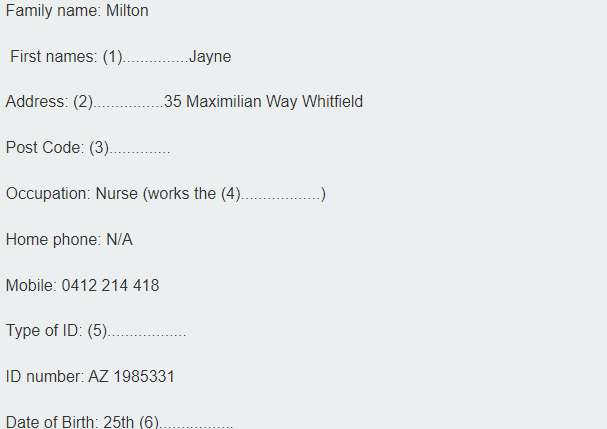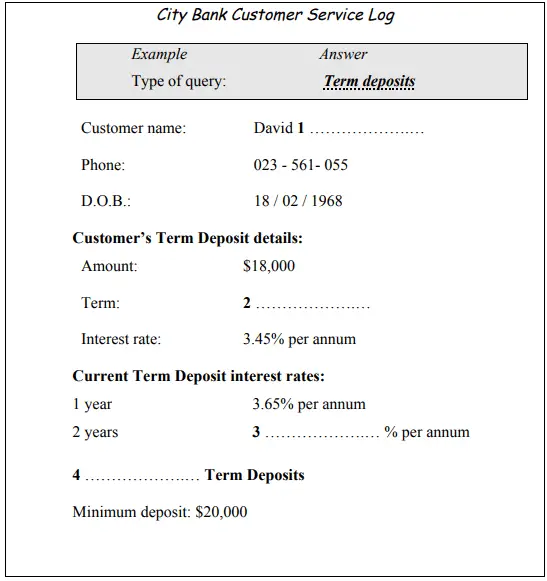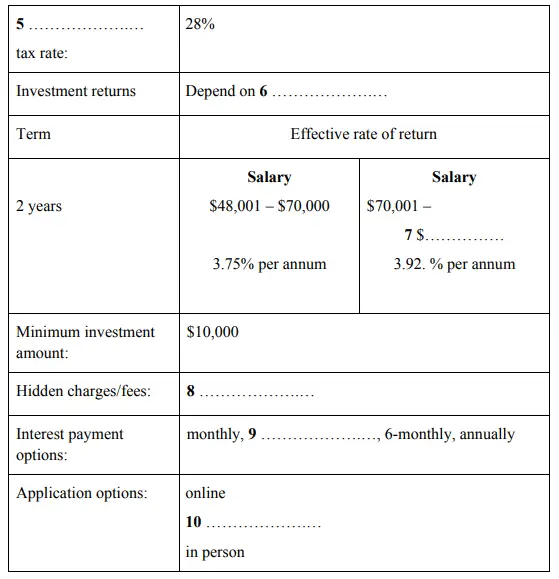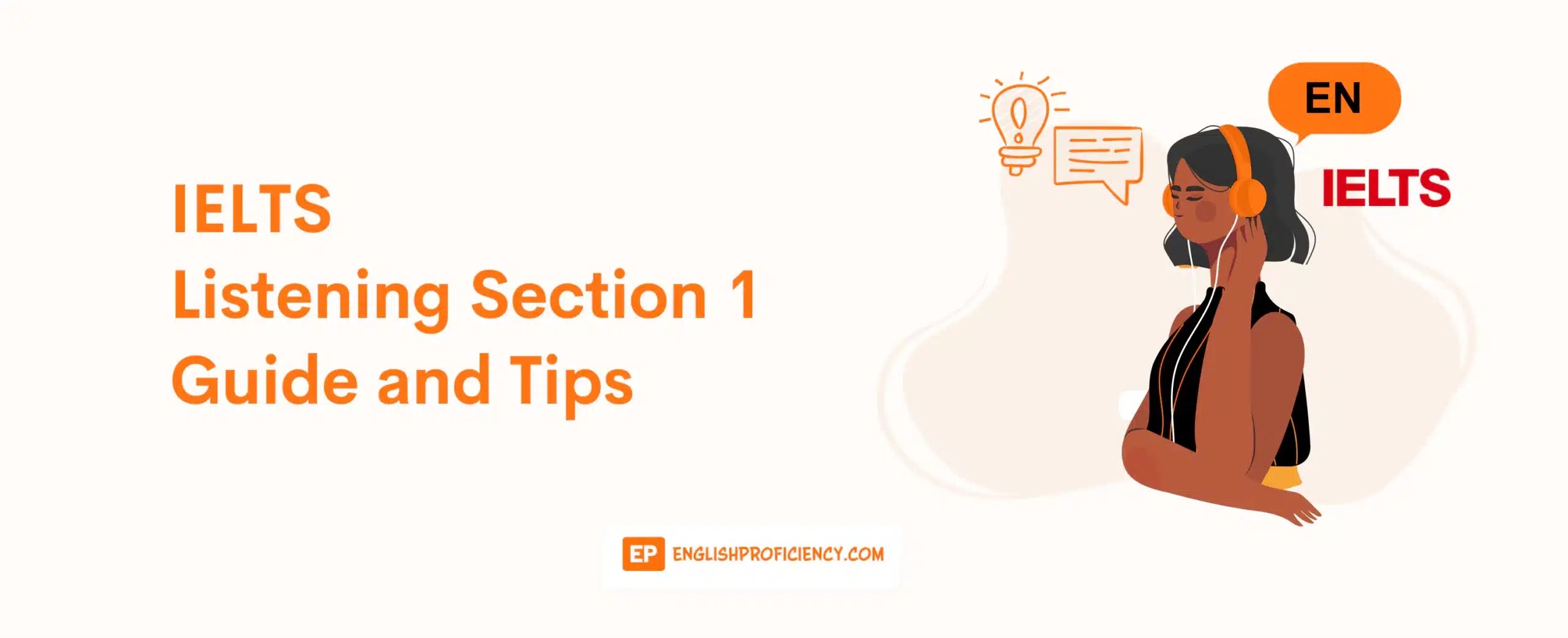The IELTS Listening Section 1 is designed to put your listening skills to the test, and thus, could be quite challenging. Many candidates did not fare so well in this part of the test because they did not prepare well enough and were not aware of how the IELTS Listening Section 1 is conducted.
Familiarizing yourself with the test format while preparing for the IELTS Listening Section 1 is one key factor that will help you get a high band score.
In this article, we have gathered every piece of information there is to know about the IELTS Listening Section 1 to help you ace this part of the test, so read on.
IELTS Listening Overview
The IELTS Listening Test is one of the four tests in the IELTS Test.
It is the same for the IELTS Academic and the IELTS General Training modules. It has four parts, and there are ten questions to answer in each part. The material is played via audio recordings that will be played only once.
The IELTS Listening Section 1 is the first of the four sections of the IELTS Listening Test:
- Part 1 or Section 1
- Part 2 or Section 2
- Part 3 or Section 3
- Part 4 or Section 4
You will hear a 2-3-minute transactional conversation between two or three people. This means that one of the participants in the dialogue needs something. Examples are joining a club, inquiring about a product or service, or anything related to university studies.
Listen to the audio recordings and instructions carefully. Take notes if you need to.
Follow the instructions because even if your answers are correct, it is marked wrong if you do not write the required number of words/numbers.
Write your responses on the question booklet as you listen to the audio recordings. After all audio recordings are played, you are given 10 minutes to transfer your answers on your answer sheet.
IELTS Listening Section 1 General Listening Tips
The IELTS Listening Section 1 is not just about listening. More than anything else, it is about comprehending what you have heard and learning how to paraphrase and reword the information from the audio recordings. It is also about following the instructions.
Here are some tips and guidelines that you should follow and employ to ace the IELTS Listening Section 1 effortlessly.
- Focus on what matters
While listening, do not concentrate on spelling. However, double-check that you spell all words correctly when transferring your answers. Take note that both American and British English spellings are acceptable.
Do not try to comprehend everything in the audio recordings as well. Simply attempt to answer the questions on the question paper. Your focus and attention are crucial in this situation. Concentrate on items that are numerical, such as dates and numbers.
- Do not panic.
Do not worry if you missed an answer to a question; just go on to the next question. If you wait for that specific question, you risk losing the rest of the information from the audio recording, as well as the questions that go along with it.
- Use your time wisely.
Before the audio recording is played, you get a 30-second break to browse and go through the question paper. Try guessing what the possible questions will be. It will make things easier for you to identify the relevant answer. Try to keep the questions in your head not to be nervous.
- Stick to the word limit.
You must write your answer in the prescribed word limit in the IELTS Listening Section 1 or any other portion of the Listening Test. You are not permitted to write more or less than the specified word count. Your grades will be deducted if you do so. As a result, you should prepare ahead of time to jot down answers within the word limit.
- Avoid silly mistakes.
Some candidates may make foolish mistakes even though this is the easiest section of the IELTS Listening Test. One typical blunder is to write down the unit when it is already written in the question or write down an answer without a unit when required.
Examples:
Fare: $ ________ (answer should be 20)
Fare: ________ (answer should be $20)
Time: ________ (answer should be 3 hours)
Time: ________ hours (answer should be 3)
- Be ready to hear a possible answer that is not the actual answer.
When two people are forming arrangements, this is a regular occurrence. They initially agreed to meet at a specific time, but one of them later realized that they would be unable to do so, so they set a new time.
Be mindful of such ‘tricks’ as many candidates have fallen for this. Listen attentively before you write your answers.
Helpful Tips Per Question Set on IELTS Listening Section 1
You will see different question types in the IELTS Listening Section 1. For each type of question, you need to employ different strategies to answer them best to maximize the time you will be given.
Below are the different question types in the IELTS Listening Section 1 and the tips on how you should answer them:
1. Form, Note, Table, Summary Completion
You must fill in the gaps in an outline in this completion activity of the IELTS Listening Section 1. The primary ideas/facts in the text will focus on the outline. You must stick to the word count outlined in the instructions and use the exact words heard on the tape.
The required number of answers you should write will vary depending on the instructions, so read them carefully. ‘NO MORE THAN TWO WORDS and A NUMBER’ is an example of a word limit.
If you exceed the word limit, your response will be marked incorrect, so check the word limit carefully for each question. Contracted words, such as ‘don’t,’ will not be tested. Hyphenated words, such as ’empty-handed,’ are treated as separate words.
2. Multiple-Choice
There will be one correct answer or multiple correct answers to multiple-choice questions. To determine how many answers are necessary, carefully read the question.
In a multiple-choice question, you will be given a long list of alternative responses and instructed that you choose more than one correct answer.
A variety of skills are tested using multiple-choice questions. You may be expected to thoroughly comprehend specific topics or a general understanding of the listening text’s main points.
3. Sentence Completion
In this sentence completion problem, you must read a set of sentences that summarize significant information from the audio recordings. You will fill in the gaps in each sentence. ‘NO MORE THAN ONE WORD AND/OR A NUMBER’ is an example of a word limit.
The number of answers you should write will depend on the instructions, so read them carefully. If you exceed the word limit, your response will be marked incorrect, so check the word limit carefully for each question. Sentence completion tests your ability to recognize important details from the audio recordings.
How to Prepare for The IELTS Listening Section 1?
Though the IELTS Listening Section 1 may seem the easiest among the four sections of the IELTS Listening Test, as you only need to complete a form with 1-2 words or numbers, this is not to say that you should not take this part of the test seriously.
Your IELTS Listening Section 1 accounts for your overall marks in the IELTS Listening Test, and you should exert as much effort while preparing for the other sections of the IELTS Test.
Below are some tips and tricks on making yourself ready for the IELTS Listening Section 1.
- Practice listening to audio recordings.
The first tip we can give you for the IELTS Listening Section 1 is to be aware of the test atmosphere. You should practice becoming a good listener because you will only listen to the audio recording once. It is only through practice that this is possible. So start listening to any audio recordings you have and make it a habit.
- Be adaptable and learn how to multitask.
The IELTS Listening Section 1 requires you to do two things simultaneously – listening and taking notes. Weeks (or months) before taking the test, ensure that you have mastered how to do these things. This will give you the edge; you need not panic and not focus during the test.
- Familiarize yourself with the different accents.
To fare better in the IELTS Listening Section 1, you must become familiar with various accents. Remember that the IELTS Test is an international English language competence test.
Students, workers, and migrants from different countries take it. The audio recording’s accent will not be particular to any specific country or region. Instead, it will differ from one candidate to the next and have various accents. It could be British, American, or Australian, to name a few.
- Keep your focus.
You will be able to listen to the audio recording only once, and you will have 30 minutes to answer the question. You must maintain your focus, or you will overlook essential data and details required for the responses.
You should begin exercising concentration straight away. Playing brain games, meditating, or working while listening to music are all good ways to improve your concentration.
- Improve your handwriting (if it is bad).
Though this might not seem too important, your handwriting will play a crucial role in the IELTS Listening Section 1. You are graded based on your performance on the test. Assume you did well on the test and wrote down all correct answers. Your handwriting, on the other hand, is hardly recognizable. Chances are, the examiner will be unable to interpret your replies, and you will receive a low grade. To avoid this, enhance your handwriting by writing 1 to 2 pages every day.
- Make use of practice (mock) tests.
Utilizing the different practice tests is one key factor that will spell the difference between a high and a low band score in the IELTS Listening Section 1. Do a lot of mock tests and get used to how the test is conducted.
Make use of the different practice tests available online. However, learn how to filter which ones would deem helpful and which ones would not.
For a thorough and comprehensive guide on how to prepare for the entire IELTS test, check out our comprehensive IELTS preparation guide.
IELTS Listening Section 1 Practice Questions
Getting yourself familiar with the different types of questions in the IELTS Listening Section 1 will give you an advantage and thus, can help you give your best performance in the IELTS Listening Section 1.
Below are some practice questions you can use to make yourself acquainted with how this part of the test will go:
Example 1:
Complete the notes below. Your answer should be no more than two words/numbers for each.

Example 2:
Complete the form below. Your answer should be no more than two words/numbers for each.

Example 3:
Complete the table below. Your answer should be no more than three words/numbers for each.

Example 4:
Complete the table below. Your answer should be no more than two words/numbers for each.

The IELTS Listening Section 1 is the first part of the IELTS Listening Test and is considered the easiest. Thus, it is advised that you have a strong start to get your momentum going for the succeeding parts of the IELTS Listening Test.
Practice as much as you can, as often as you can. Utilize materials and resources that are available online. Most, if not all, of them, are free. Follow the tips mentioned above, and you will be on the right track. All the best on your IELTS journey!
Additional FAQs on IELTS Listening Section 1
How Can I Get a High Band Score in the IELTS Listening Section 1?
Getting a high band score in the IELTS Listening Section 1 will depend on how well you have prepared and studied for the test.
To achieve the band score you are aiming for, all you need to do is practice, practice, and practice some more.
Start practicing the moment you register for the test. As much as possible, you are advised to start preparing 6-8 weeks before your actual test.
What Skills are Needed in the IELTS Listening Section 1?
To ace the IELTS Listening Section 1, you will have to master multi-tasking skills. That is listening while writing down important details from the audio recordings.
Paraphrasing is another key factor that will give you an advantage in this part of the test. The majority of the questions in the IELTS Test are paraphrased and reworded.
Will I Be Given Extra Time in the IELTS Listening Section 1?
Yes, you will be given extra time in the IELTS Listening Section 1. The entire test lasts for 40 minutes, 10 minutes of which will allow you to transfer your answers on your answer sheet. Make sure you transfer your answers correctly and do not leave any unanswered items blank.
Moreover, if you are taking the computer-based IELTS Listening Test, you will not be given an extra time of 10 minutes because your answers are already encoded on the computer.
Should I Write Numbers in Words or Figures in the IELTS Listening Section 1?
You may write numbers either in words or in figures. Both are acceptable as long as your answers are correct.
As mentioned earlier (as stated in this article above), be mindful of the information being asked. If a unit of measurement is already given, make sure you only right the number, or your answer will be marked wrong.

